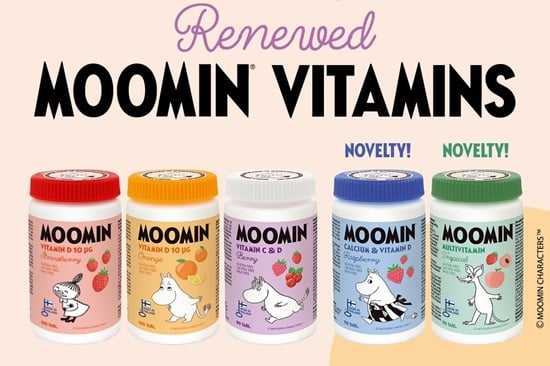Q&A about the medicines verification system for pharma companies, pharmacies and veterinarians operating in Finland
26.1.2020
European Falsified Medicines Directive (FMD) enters into force on 9th February 2019. Preparations have proceeded in good cooperation with all the parties that are part of the medicine value chain. Here are questions and answers about the medicines verification system for pharma companies, pharmacies and veterinarians operating in Finland.
What is the medicines verification system?
The medicines verification system consists of the European central repository (EU HUB) in which pharmaceutical manufacturers enter the identification information for each medicine pack that is included in the medicines verification system and brought onto the market. In addition, the national repositories of the EU and EEA countries are updated with the data entered into the central repository.
In Finland, Suomen Lääkevarmennus, FIMVO, has been responsible for developing and building the national medicines verification system, and the Finnish Medicines Agency Fimea supervises the execution of the Falsified Medicines Directive in Finland.
Why has the medicines verification system been implemented?
The main purpose of the medicines verification system is to prevent falsified medicines from entering the legal supply chain.
What information should be on the medicine packs starting from 9 February 2019?
The unique identifier information of a medicine pack consists of a unique serial number, product code, batch number and expiry date. In addition to the unique identifier, the packs are equipped with an anti-tampering device (for example a seal or tear-off strip) which reveals whether the medicine pack has been opened.
What type of medicines does the medicines verification system apply to?
The medicines verification system applies to most human prescription medicines. Safety features will be added to more than 7,500 prescription medicine packs, and only less than 400 prescription medicine packs will remain unchanged, including, for example, homeopathic products and medicinal gases. Non-prescription medicines (except medicines containing omepratzol) and prescription medicines for animals are not included in the medicines verification system.
What is the pharmacy's role in the medicines verification system?
Pharmacies will verify that the medicine pack has not been tampered with and check the pack out from the medicines verification system when dispensing the medicine to the patient.
What medicines verification system will pharmacies use in Finland?
Pharmacies will use the national medicines verification system and will log in to it using their own system provided by their IT partner.
How are the data of medicine packs generated in the medicines verification system?
Pharmaceutical companies must upload information about their products that are included in the medicines verification system into the European repository (EU HUB). The information must be entered in the EU HUB when the batch has been released to the market after 9 February 2019.
To pharmacies, hospital pharmacies and dispensaries
What will change for medicine pack batches released after 9 February 2019?
Starting from 9 February 2019, Oriola has committed to verify one pack from each arriving new serialised batch as part of the normal inspection of incoming batches. If we receive an alert notification from the national repository during the inspection of an incoming batch, a deviation procedure is triggered due to a potential suspected falsified medicine. In such cases, the batch may not be dispensed before it has been cleared by the marketing authorisation holder. This process prevents falsified batches from entering the legal medicine supply chain.
What should I do if the product triggers an alert at verification or decommissioning from the national medicines verification system?
If scanning of the medicine pack results in an alert notification, it may not be dispensed and the marketing authorisation holder must be notified.
How can I report a suspected falsified medicine?
In Finland, pharmacies report suspected falsified medicines via the pharmacy IT system, and the notification will be visible as an individual transaction number in the OriolaPro Asiointi/Palaute folder. If the marketing authorization holder requests that the product be returned, the pharmacy can print out a product return form linked to the individual transaction number from OriolaPro. The product is returned to Oriola using the normal return procedure.
Hospital pharmacies and dispensaries in Finland report suspected falsified medicines via OriolaPro. If the marketing authorisation holder requests that the product be returned, the hospital pharmacy or dispensary can print out a product return form linked to the individual transaction number from OriolaPro. The product is returned to Oriola using the normal return procedure.
Can I return a pack which has triggered an alert to Oriola?
The product may only be returned if instructed to do so by the marketing authorisation holder.
What should I do if the serialisation code on the pack cannot be read?
If there is no reason to suspect that the product is falsified or broken, our customers can follow the procedure used for suspected product defects.
What should I do if the anti-tampering device is not intact?
If the anti-tampering device on the pack is broken or damaged and the pharmacy does not have reason to suspect that the medicine is falsified or that the pack has been broken during transportation, the pharmacy can return the pack to Oriola as a suspected defective product. If the pack has been broken or damaged during transportation, the pharmacy can follow the normal process by submitting a reclamation concerning the broken package.
Can Oriola upload products into the national medicines verification system?
As a wholesaler and distributor, Oriola does not have the rights to upload the unique identifier information of a medicine pack into the national medicines verification system. Questions relating to alerts should be addressed to the marketing authorisation holder, who is responsible for activating products in the national medicines verification system.
If the entire production batch of the product has already been locked, for example due to a suspected falsification, this information is included in the alert response. In such case, the product may not be dispensed to the patient.
How will I be notified that the marketing authorisation holder has handled the pack alert and that I may dispense the product?
The marketing authorisation holder will contact the pharmacy directly. Reference will be made to the address or number given by the pharmacy in OriolaPro. Oriola will not be informed by the marketing authorisation holder about the progress of handling the issue, nor receive a notification when the alert made by the customer has been handled.
Can a pack delivered from Oriola alert when scanned?
The marketing authorisation holder may already have added 2D codes and anti-tampering devices on the products for batches released before 9 February 2019, but has not activated them in the national medicines verification system. In this case, they will trigger an alert before 9 February. Such packs may have been delivered from Oriola to a pharmacy before the initiation of verification. Marketing authorisation holders aim to also register packs released before the directive enters into force, but the registrations may be defective. You should request batch-specific serialisation information from the marketing authorisation holder.
Is it possible to see from the pack that the product is active in the national medicines verification system?
To be able to check the active status of the pack from the national medicines verification system, the pack has to have a 2D barcode.
How will the pharmacy system be notified of a serialised product?
In Finland, the Pharmaceutical Information Centre (Lääketietokeskus) is responsible for communicating serialisation information to pharmacies, hospital pharmacies and wholesalers. Pharmacies and hospital pharmacies are responsible for maintaining product information in their own systems. The serialisation status of products will be maintained in the systems similarly to other product information.
Can a pharmacy return a product included in serialisation to Oriola when it is not associated with an alert?
In accordance with the normal delivery terms, pharmacies and hospital pharmacies may return products to Oriola if they have not been decommissioned from the national medicines verification system and their anti-tampering mechanisms are intact. If a pharmacy or hospital pharmacy has decommissioned a product from the national medicines verification system or if they have opened the anti-tampering device, the product is not saleable and cannot be returned to Oriola.
Pharmacies, hospital pharmacies, dispensaries and veterinarians
In which cases will Oriola decommission a pack from the national medicines verification system?
Oriola will never decommission from the national medicines verification system any products to be delivered to pharmacies, hospital pharmacies and dispensaries. Oriola will only decommission products from the national medicines verification system in association with deliveries that are sent to a recipient who is not, according to the Falsified Medicines Directive, obligated to decommission the products from the system themself. Such recipients include veterinarians.
In association with the delivery, Oriola will decommission from the national medicines verification system any sample products and products related to clinical trials which are included in medicines verification.
How can you know if a consignment arriving from Oriola includes packs which are in the scope of serialisation?
Oriola will not decommission serialised products from the national medicines verification system in case of deliveries to pharmacies, hospital pharmacies and dispensaries. Serialised products will be delivered normally together with other products and thus they are not specified. Identification of serialised products will be done by the recipient using their own systems.
In deliveries to veterinarians, serialised products have been decommissioned from the national medicines verification system and they will be sent in a separate box. The transport box will contain (during a separately notified transition period) a cover letter where we explain that the packs in the said box have been decommissioned from the national medicines verification system.
Marketing authorisation holders
Which actions has Oriola taken to prepare for the requirements of the Falsified Medicines Directive which enters into force on 9 February 2019?
On 3 December 2018, Oriola has initiated all required processes in its production, excluding the alert process. We have also updated our code of conduct and practices to be in line with the Falsified Medicines Directive. Starting from 9 February 2019, the alert processes will be taken into account in all our operations.
Is Oriola connected to the national medicines verification system?
Yes, we verify and decommission medicines directly from the national medicines verification system in accordance with the regulation.
What will Oriola do with packs which alert during verification?
If verifying and decommissioning the pack from the medications verification system results in an alert notification, Oriola will inform the marketing authorisation holder.
After the Falsified Medicines Directive takes effect, we will follow authority regulations in the deliveries of inbound product batches. We support the adoption of the directive by informing the marketing authorisation holder if the medicine verification system does not recognise a batch with 2D barcodes that has been delivered to Oriola after 9 February 2019. Our supply chain coordinator will contact the marketing authorisation holder and request instructions for further actions. The product can be delivered to the customer only after the marketing authorisation holder has confirmed the next steps.
Is the system used by Oriola for scanning from the national medicines verification system validated?
Oriola uses Pharmadata’s SecureMedi system, which is connected to the national medicines verification system. The system is validated.
Is Oriola integrated into the suppliers’ own ancillary systems of the national medicines verification system, e.g. Tracelink?
Oriola is not integrated into Tracelink. Verifications and scanning are done directly between Oriola’s own system (SecureMedi) and the national medicines verification system.
Is a report available on verifications and decommissionings from the national medications verification system?
We can provide marketing authorisation holders with reports on what Oriola has done in the national verification system in accordance with contracts.
From where does Oriola get information about which products are covered by the Falsified Medicines Directive?
Marketing authorisation holders inform the Pharmaceutical Information Centre (Lääketietokeskus) about serialised products and their serialisation date. This information is transferred directly into Oriola’s Master Data when we download the product data.
Can Oriola trace to whom each serialised pack has been delivered?
The medicines verification system is not used to track batches but to prevent falsified medicines from entering the legal supply chain. Oriola registers inbound batches in the ERP system, but does not have the individual serial codes of each package. Batch level traceability is possible.
Sources: Oriola, Orion, Pharmaceutical Information Center, Finnish Medicines Verification organisation, FIMVO


